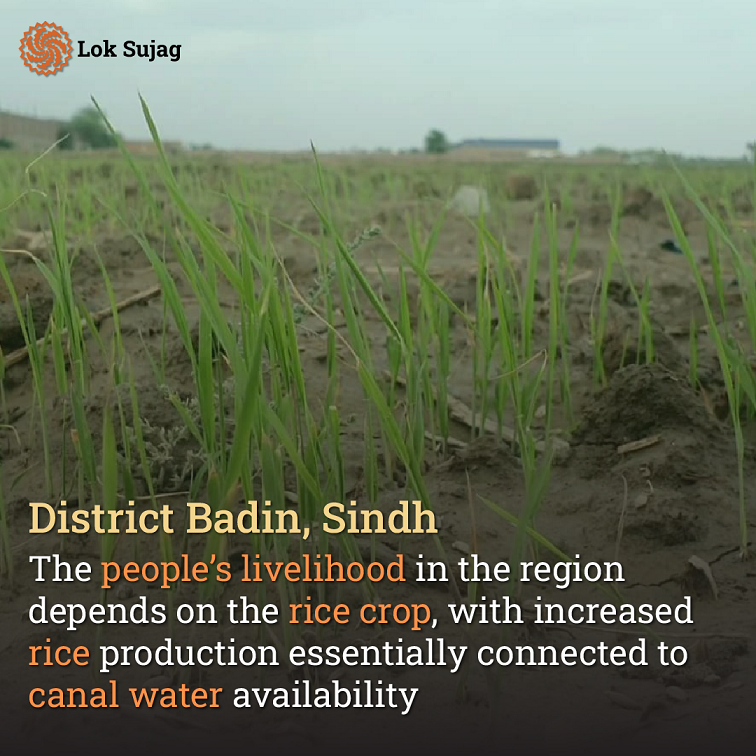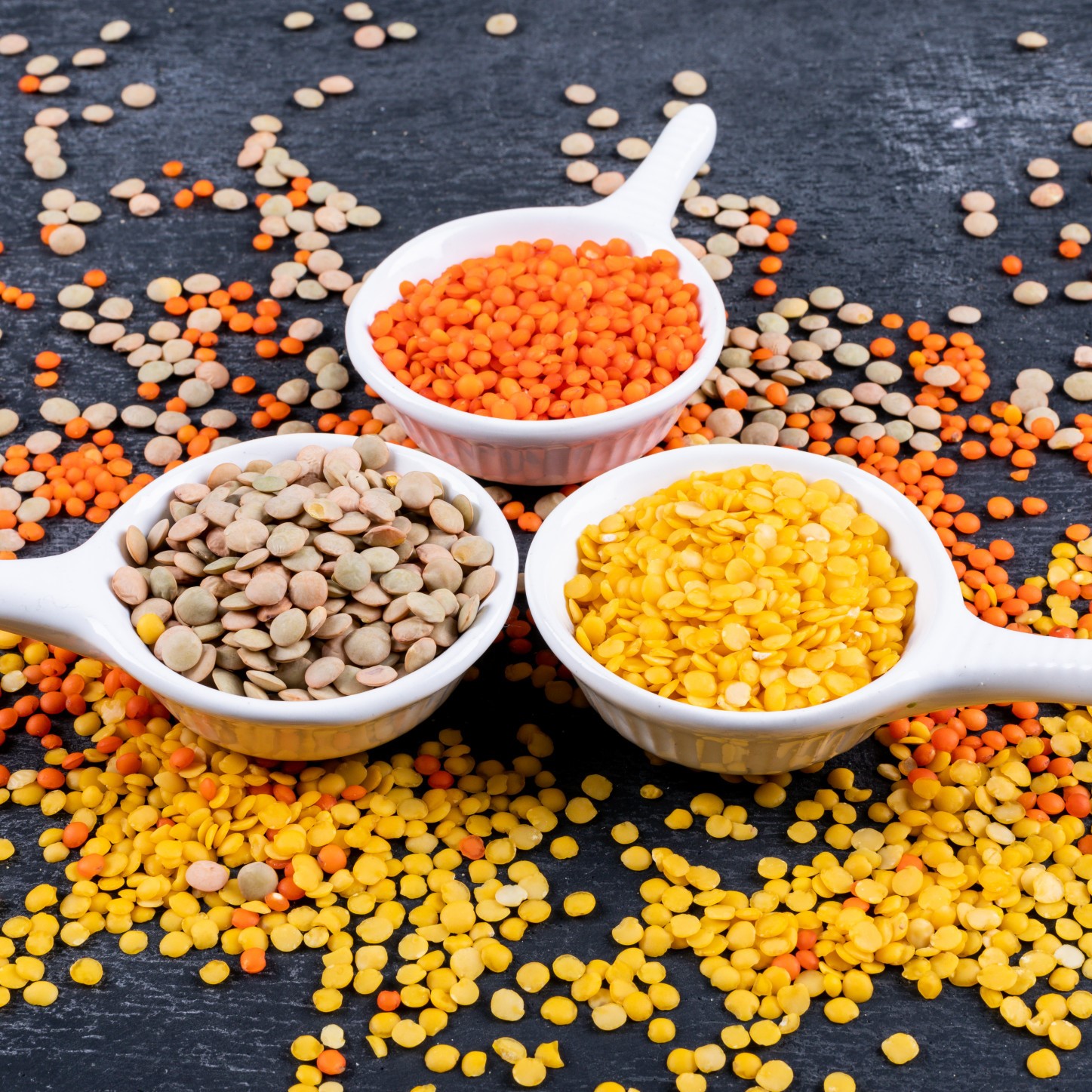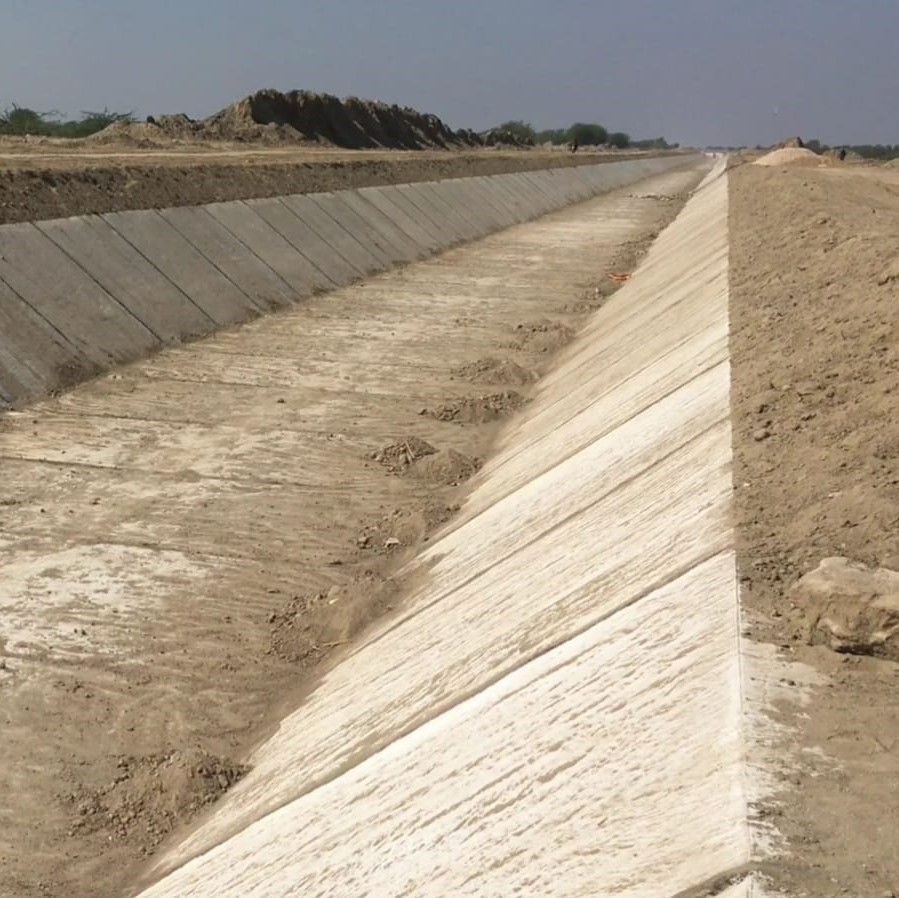Talha Arayan cultivates rice annually on 80 acres of land. Typically, the crop is ready for cultivation from mid-June to mid-July. However, this year, he could not harvest the crop even by the end of July due to the delayed arrival of water in the canal in his region.
Talha resides in the Terai town of Golarchi Tehsil within the Badin District of Lower Sindh. He owns agricultural land that relies on irrigation from the Imam Wah Canal.
He explains that, traditionally, water has been supplied to the Imam Wah Canal in May each year. However, over the past few years, there has been a consistent delay of about a month, causing water to be released at the beginning of June.
“The situation reached a critical point as the water was eventually released after the middle of July had already passed. However, the quantity of water provided was so meagre that it failed to reach the farmers at the tail end of the canal.”

He says that the delayed release and inadequate volume of water in the canal are because his district failed to receive its rightful share. He further alleges that influential landowners living at the canal’s source are responsible for diverting and stealing the water.
Talha notes that the farmers at the tail end of the lower Sindh districts – Badin, Thatta, and Sajawal – face identical circumstances.
He expresses concern that this year’s water shortage might significantly reduce the area under rice cultivation.
As per a report from the Federal Ministry of Food Security and Research, the collective irrigated agricultural expanse in Sindh spans 4,075,500 acres. Among this, a substantial 78 per cent, equivalent to 3,186,000 acres, is irrigated via canals.
Various institutions’ research indicates that approximately 89 per cent of the underground water in Sindh carries a high saline content, rendering it unsuitable for irrigation.
Consequently, most agricultural activities in this province rely on canal water. A scarcity or reduction of water in the canals could significantly impact crop production.

In Sindh, paddy cultivation encompasses an expanse of 1.9 to 2 million acres. Notably, Badin and Thatta rank among the five principal districts engaged in this cultivation. In 2021, these two districts accounted for 23 per cent of the province’s overall cultivated area.
As per Talha, the Golarchi Tehsil of Badin district comprises 14 union councils, namely Golarchi, Khorwah, Khanani Jat, Khorwah Chowk, Ahmad Raju, Muhammad Shah Girhari, Kadio Ghanoor, Terai, Dubai, Rahoki, Fatehabad, Dhadharko, Gharo, and Patel Chawl Garh. These regions are renowned for their extensive rice cultivation.
He elaborates on the significant role that rice cultivation plays in supporting people’s livelihoods within his area.
The enhancement of rice production is tied to the availability of canal water.
To explain the link between canal water and rice cultivation, he tells Lok Sujag about a protest in Golarchi Tehsil on July 18.
He states that during this demonstration, hundreds of farmers gathered to communicate their issues to the government via the media. However, no concrete actions have been taken, and the problem of inadequate canal water persists.

Among the farmers’ protest participants was 45-year-old Amir Dahri, who asserts that the water allocated for his use has been illicitly sold by officials from the irrigation department to landowners situated at the start of the canal, fetching only a tiny sum.
He explains that the water vanishes before it even reaches his fields. This scarcity has not only prevented the farmers of Teal from cultivating rice but has also led to the drying up and deterioration of their cheese.
“We are incurring losses worth millions of rupees, but no one seems to be concerned.”
Nawaz Chandio and Saleh Memon, both protest organisers, claim that instead of addressing the issue, the irrigation department reportedly asks for a bribe of Rs 10,000 from the farmers.
Nawaz states that demanding such bribes from individual farmers signifies that all the farmers downstream of this canal would need to collectively pay large sums, potentially amounting to lakhs of rupees, only to ensure the release of the required water into the canal.

In addition to Nawaz, various other farmers also level accusations against officials from the Irrigation Department, alleging that these officials unfairly divert water from the shares of smaller farmers through bribery or under the influence of politicians, feudal lords, and prominent landowners, all aiming to irrigate their own plots of land.
Furthermore, he points out that influential landowners positioned at the beginning of the canals resort to the illegal practice of stealing water by installing motor pumps and water lift machines.
According to Shams Memon, the Sub-Division Officer (SDO) of the Irrigation Department in Golarchi, the agricultural water supply to Golarchi tehsil relies on two primary canals, namely Goni Canal and Hasan Ali Canal.
Also Read

Farmers in Tharparkar demand fair prices for local crops amidst rising seed costs and decreasing crop sales
The Goni Canal boasts a capacity of 10,208 cusecs, while the Hassan Ali Canal is designed to hold up to 9,000 cusecs. These two canals have delivered significantly diminished water quantities over the past several years. This substantial reduction in water supply is the leading cause of the water scarcity experienced in this region.
He explains that there have been no reported incidents of water theft during this particular season.
Nevertheless, over the past three years, multiple instances of water theft have been officially recorded at Golarchi, Kadio Ghanoor, and Khurwah police stations.
Imtiaz Bhargari, the Executive Engineer (Exion) at the Irrigation Department, currently stationed at the Goni Canal, clarifies that the water flow was obstructed due to the Bipar Joy storm and subsequent rains. As a result of these weather events, the water delivery to the canal faced a slight delay of a few days.
When questioned regarding the farmers’ complaints about water shortages, he says that they provide the canals with the same volume of water they receive. The beginning of rice cultivation across the entire region has led to increased demand for the canals, resulting in farmers’ grievances.
Published on 9 Aug 2023


















